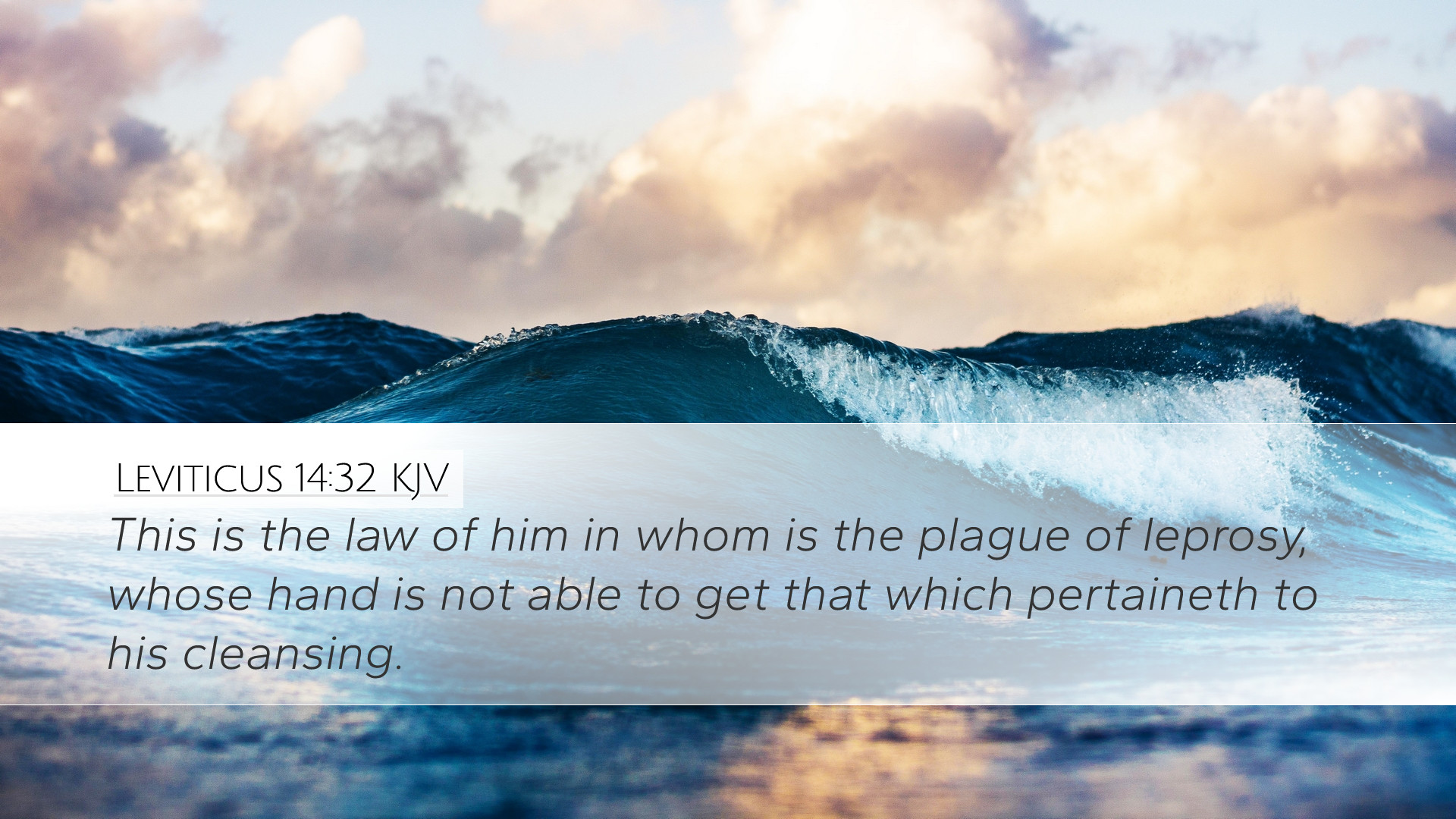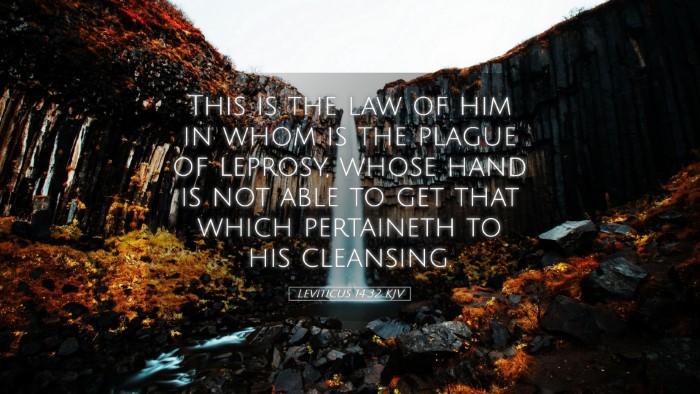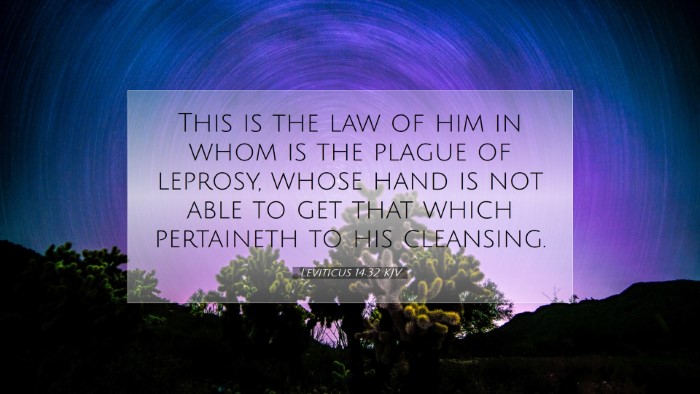Bible Commentary on Leviticus 14:32
Verse: "This is the law of the leper in the day of his cleansing: Now he shall be brought unto the priest." (Leviticus 14:32, KJV)
Introduction
The laws concerning leprosy in Leviticus 14 illustrate the meticulous nature of Mosaic law and the broader theme of purity and community health within the Israelites' covenant relationship with God. This particular verse serves as a gateway to understanding not only the ritual of cleansing for those afflicted with leprosy but also the theological implications of sin, separation, and restoration.
Context and Background
Leviticus is composed during a critical time in the history of Israel, post-Exodus, as the community establishes itself in covenant with God. Chapter 14 is particularly focused on the procedures for cleansing the leper, which symbolically enriches the understanding of sin and God's redemptive work.
Leprosy, termed 'tzaraath' in Hebrew, encompasses various skin diseases, symbolizing sin's corrupting nature. This chapter details the process of diagnosis, isolation, and, ultimately, restoration into the community.
Commentary Insights
Matthew Henry’s Commentary
Matthew Henry emphasizes that this law is a preparatory means for the spiritual condition of the leper. The process of being brought to the priest represents a critical moment of recognition and acknowledgment of one's stain—both physical and spiritual. Henry points out that, akin to sin, leprosy isolates individuals from the community and God, necessitating a priest to mediate and pronounce cleansing.
Albert Barnes’ Notes
Albert Barnes elaborates on the nature of the priest's role, asserting that the priest has the authority to declare the state of a person’s cleanliness based on adherence to God’s commandments. The involvement of the priest indicates a divine system of checks and balances, where the recognition of one's sins leads to a formal process of restoration. Barnes also highlights the importance of faith in the restoration process; the individual must believe in God’s power and the priest's role as an intermediary.
Adam Clarke’s Commentary
Adam Clarke delves into the practical applications of this law, noting that the instructions provided were for the convenience of the people and their relationship with God. Clarke argues that this system was not merely about physical healing but rather a full restoration to communal worship and service. He points out that the leper’s cleansing symbolizes the believer’s restoration from sin and the necessity of confession before moving towards sanctification.
Theological Implications
This verse encapsulates themes of ritual purity, community participation, and spiritual cleansing. The requirement for the leper to approach the priest reflects the inherent need for acknowledgment of one’s sinfulness. Such acknowledgment is a key step in embracing God’s cleansing power.
Ritual Purity
The meticulous attention to ritual purity underscores God’s holiness. Leviticus teaches that sin—and its associated physical manifestations—must be dealt with thoroughly to ensure that the community remains holy. The law demonstrates that everyone has a role in maintaining this purity.
Community and Isolation
Leprosy in biblical times isolated individuals, serving as a vivid metaphor for sin that separates humanity from God. The law prescribes that the leper must be reintegrated through a defined process signifying the importance of community in spiritual matters.
Restoration and Redemption
The progression from leprosy to cleansing parallels the Christian understanding of salvation. Just as the leper must be 'brought' to the priest, believers are called to come before Christ, the ultimate High Priest, for their restoration. The cleansing process outlines God’s redemptive purpose, illustrating that no one is beyond the reach of God’s mercy.
Practical Applications for Today
- Recognition of Sin: Believers must engage in self-examination, recognizing areas of spiritual leprosy that may exist in their lives.
- Community Involvement: The importance of confessing sins within the Christian community helps restore individuals and fosters mutual support.
- Grace and Cleansing: Understanding that true cleansing comes from Christ, who fulfills the role of mediator, is vital for modern Christians’ faith.
Conclusion
Leviticus 14:32 offers profound insights into the nature of ritual cleansing, community dynamics, and the theological underpinning of redemption. By examining the intricate details of the Hebrew law as articulated by public domain commentators, pastors, students, theologians, and Bible scholars can appreciate the layered understanding of sin, the necessity of confession, and the promise of restoration through Christ. As participants in God's redemptive narrative, the Christian community continues to bear witness to the transformative power of acknowledging sin and embracing God's grace.


